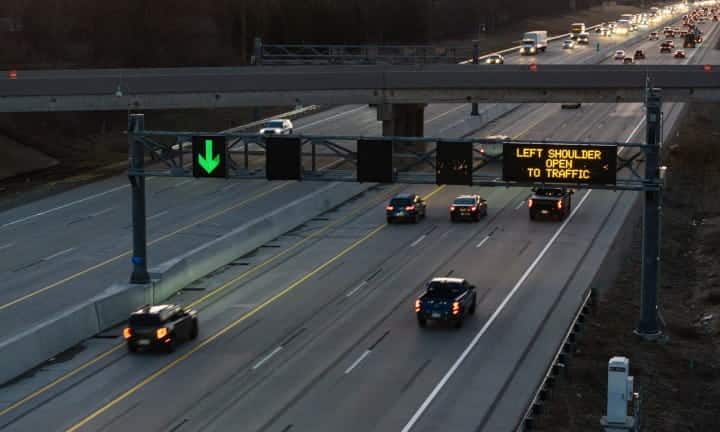Flex routes are an effective, cost-efficient way to ease congestion during peak drive times, reduce car accidents and resulting injuries, while also improving overall traffic safety. However, they can also be confusing for drivers who are unfamiliar with this technology, especially those who traverse the recently opened flex route along I-96 between Kent Lake Road and the I-275/I-696/M-5 interchange. Here is an overview of flex routes, including how they work and when Unfortunately, the most advanced technology cannot prevent some accidents. If you or a loved one is injured in a car accident, hiring an experienced car accident attorney is the best way to receive the compensation you deserve.
WHAT IS A FLEX ROUTE?
In simple terms, a flex route is a stretch of freeway where the left shoulder serves as a travel lane during peak traffic times. The system uses overhead signs and electronic message boards to inform drivers when to use the additional lane, typically during morning and afternoon rush hours. Flex lanes may also be used when a crash or other emergency blocks the right lane of the highway.
Flex routes are an economical alternative to expanding heavily trafficked freeways by adding more lanes, especially in places where congestion occurs only during certain time periods. Using highway shoulders as a third lane when needed preserves existing infrastructure and avoids costly construction and lengthy road closures.
HOW DO DRIVERS KNOW WHICH LANE TO USE ON A FLEX ROUTE?
Large electronic overhead signs provide information that is constantly updated according to current traffic conditions and potential car accidents.
The signs above the flex lane, or shoulder, tell drivers when they can use the lane. A green arrow indicates the lane is open to traffic, while a red X means the lane is closed. In addition, the signs display other important information such as a yellow chevron icon that instructs drivers to merge and reduced speed limits when traffic conditions necessitate slowing down.
The technology enables the signs to display additional messages such as “right lane blocked” or “construction ahead” to alert drivers to potential hazards.
ARE FLEX LANES OPEN TO ALL TYPES OF MOTOR VEHICLES?
The majority of passenger vehicles can use flex lanes, including cars, SUVs and pickup trucks. However, flex lanes should not be used by semi-trucks and other large commercial vehicles, which typically require wider lanes and dedicated shoulder space to safely accommodate their weight and size.
WHERE ARE MICHIGAN’S FLEX ROUTES CURRENTLY LOCATED?
At present, there are two flex routes in Michigan.
The first, opened in 2017, runs along U.S. 23 between M-14 and M-36 in Livingston and Washtenaw counties.
The second flex route, located along I-96 between Kent Lake Road and the I-275/I-696/M-5 interchange in Oakland County, opened this spring.
According to MDOT, future plans include extending the U.S. 23 flex route north to I-96.
WHEN ARE FLEX LANES OPEN TO TRAFFIC?
The flex lanes on both highways are generally open during the following hours:
I-96 flex route
- Eastbound traffic: 6 a.m. – 9 a.m.
- Westbound traffic: 3:30 p.m. – 6 p.m.
U.S. 23 flex route
- Northbound traffic: 6 a.m. – 9:30 a.m.
- Southbound traffic: 3 p.m. – 7:30 p.m.
In addition to the above schedule, flex lanes on both highways may be used for emergencies such as auto accidents, hazardous road conditions or other situations as needed.
DO FLEX ROUTES REDUCE CAR ACCIDENTS AND INJURIES IN MICHIGAN?
Yes. A study by the Michigan Department of Transportation (MDOT) found car accidents on the U.S. 23 flex route were reduced by 17 percent overall. The southbound side of the freeway saw the most notable results, where crashes decreased by 34 percent overall and more than 50 percent during peak traffic periods.
Both flex routes are monitored around the clock by the Michigan Department of Transportation (MDOT) and Michigan State Police (MSP). The agencies share resources and data from traffic sensors, distress calls and video feeds from closed-circuit TV cameras. Based on this minute-by-minute information, personnel can use the overhead signs to direct traffic when a lane is unexpectedly blocked or display reduced speeds when necessary.
In addition, drivers reported being “overwhelmingly satisfied” with the U.S. 23 flex route along the corridor between M-14 in Ann Arbor Township and M-36 in Livingston County.
Visit the MDOT website for more information about Michigan’s flex routes.
CALL OUR EXPERIENCED CAR ACCIDENT LAWYERS TO WIN THE COMPENSATION YOU DESERVE
If you or a family member is injured in a crash, we can help. Our knowledgeable lawyers have the experience, expertise and resources to protect your rights and win the compensation you and your family deserve.
Michigan car accident laws are complicated, but finding the right auto accident attorney is simple.
Don’t let the legal clock run out. Start your case today by clicking the button below or calling 1-800-CALL-SAM for a free, no-obligation consultation with a member of our legal team.
Do You Have a Case?
HAVE YOU BEEN INJURED?
Get The Bernstein Advantage® today!
Free. Simple. Quick.


